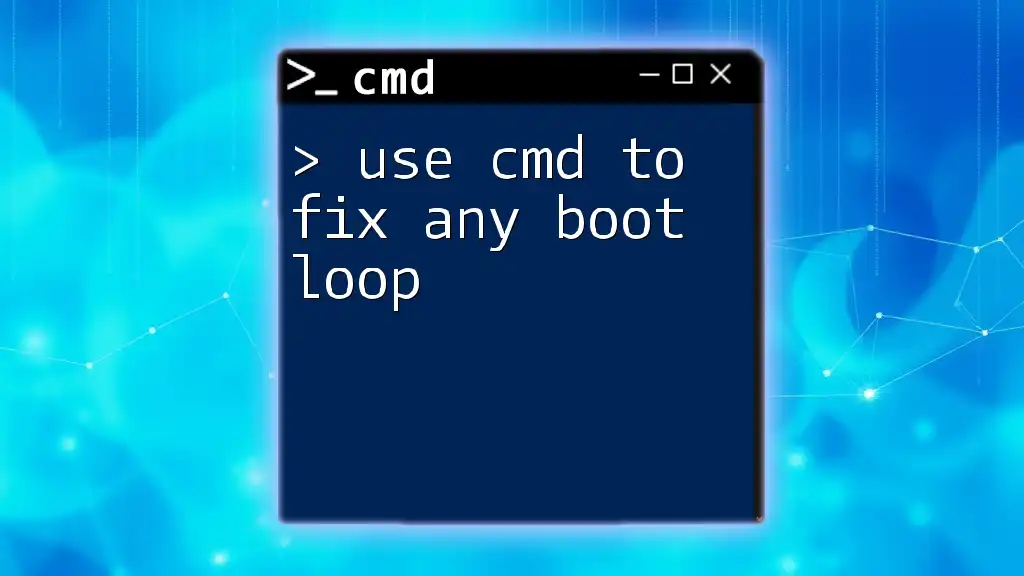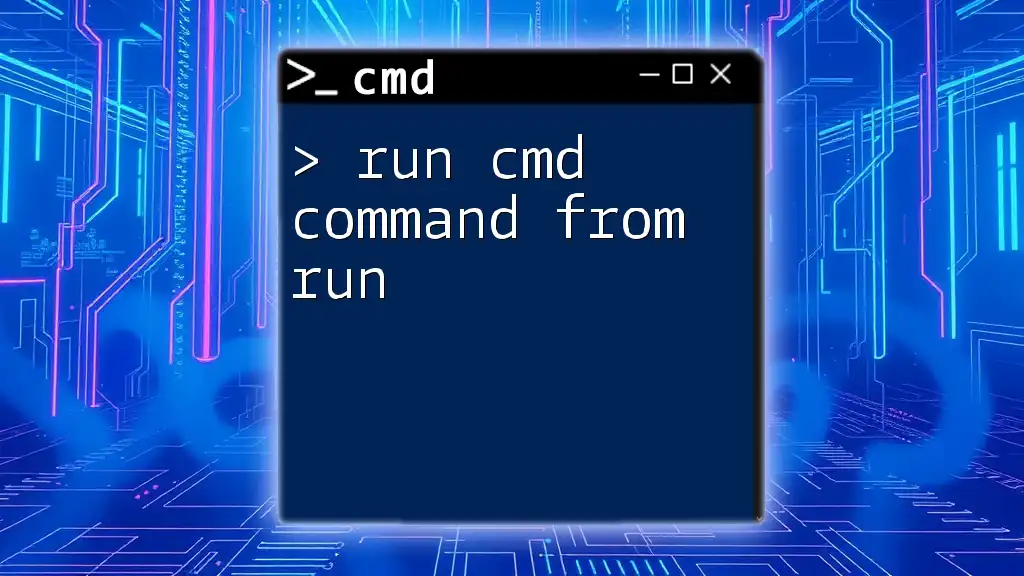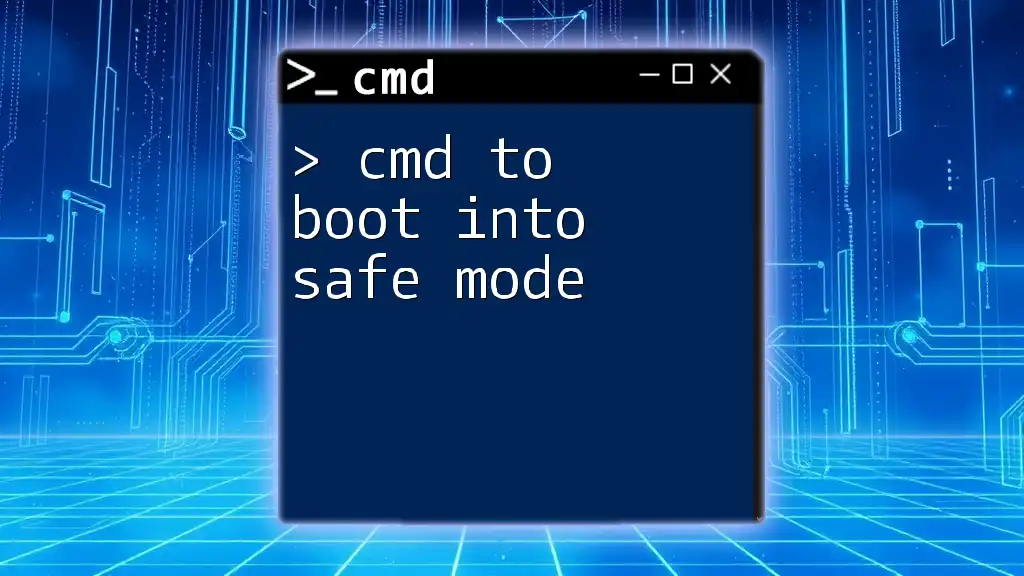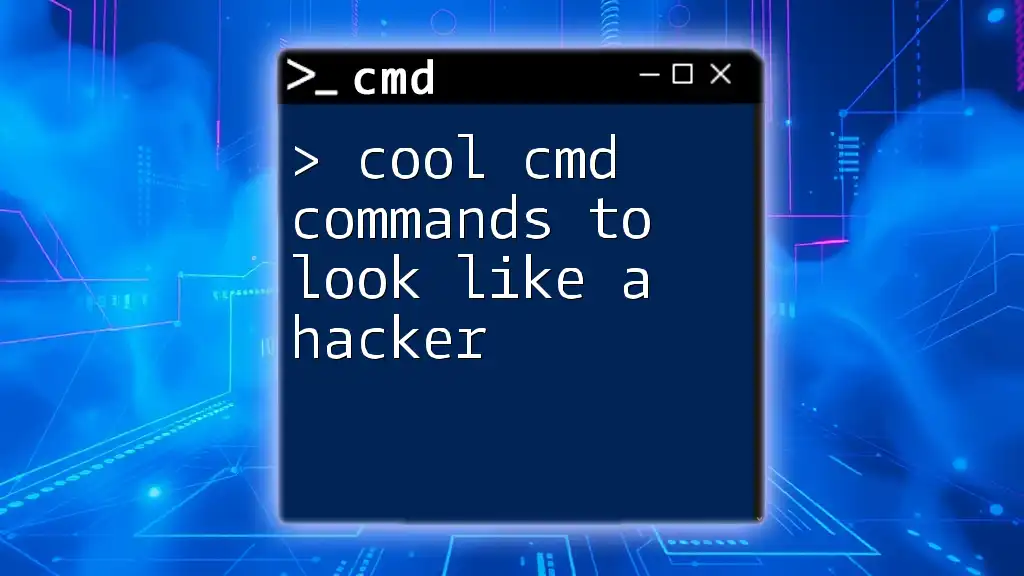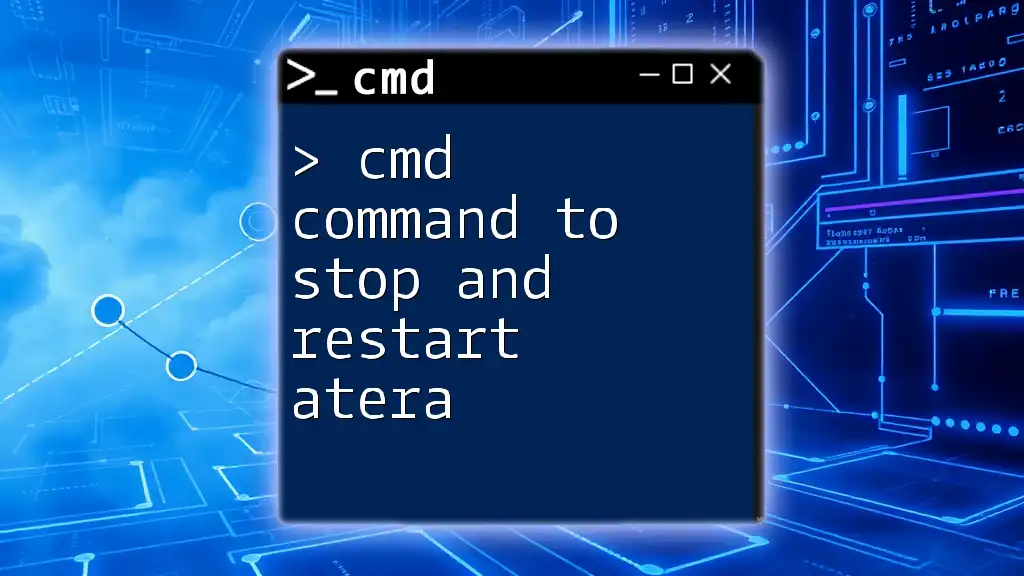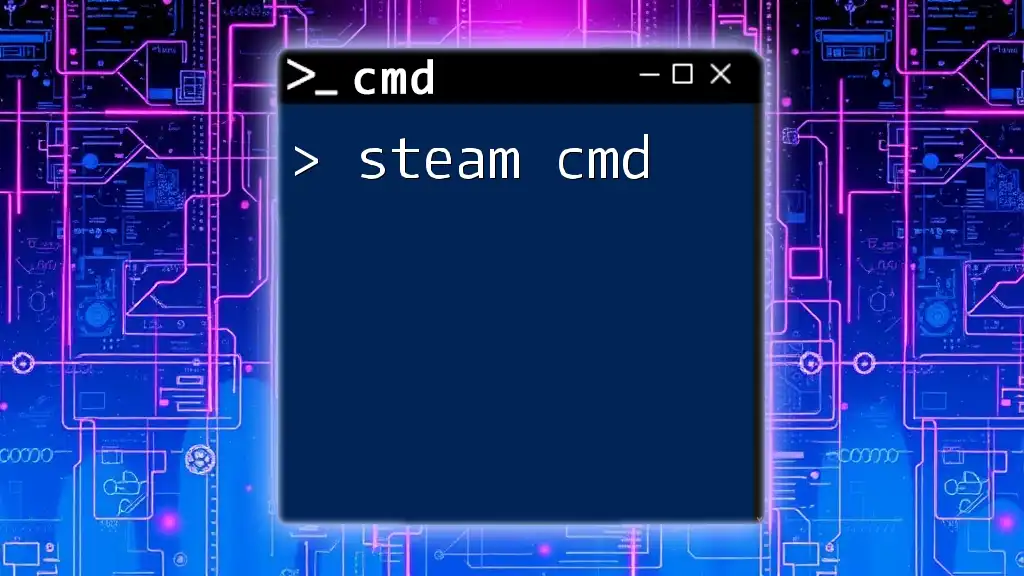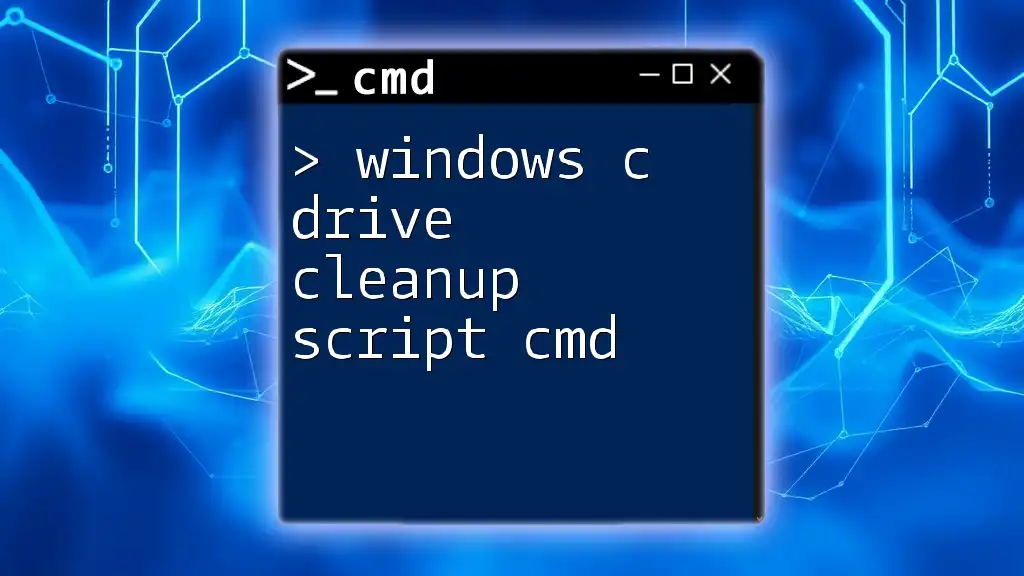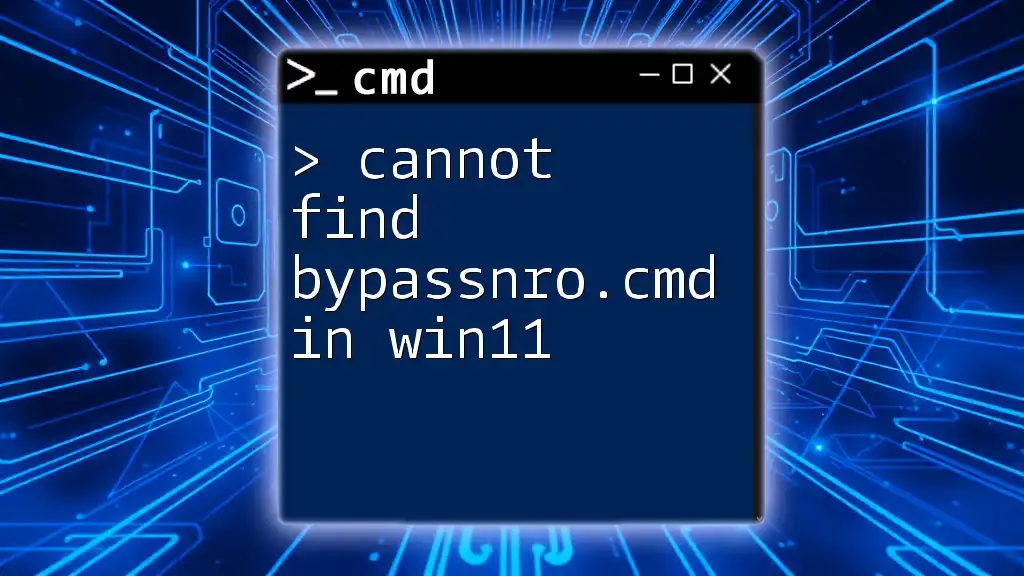You can use Command Prompt to fix a boot loop by performing a System File Check or repairing corrupted boot files with the following command:
sfc /scannow
This command scans and repairs system files, helping to resolve issues that may cause a boot loop.
Understanding Boot Loops
What is a Boot Loop?
A boot loop occurs when a computer fails to complete its boot sequence, continuously restarting and never reaching the desktop. This frustrating issue can stem from various problems, including software updates gone wrong, corrupted files, or even hardware malfunctions. Users will often notice their system restarting multiple times, displaying the manufacturer logo or error messages but never progressing to the main operating system.
Causes of Boot Loops
Common causes for boot loops include:
- Improper software installations or updates: Sometimes, system updates do not install correctly, causing conflicts that lead to boot failures.
- Corrupted system files: A corrupted application or system file can inhibit Windows from booting properly.
- Malfunctioning hardware: Issues with hardware components, such as RAM or hard drives, can also trigger boot loops.
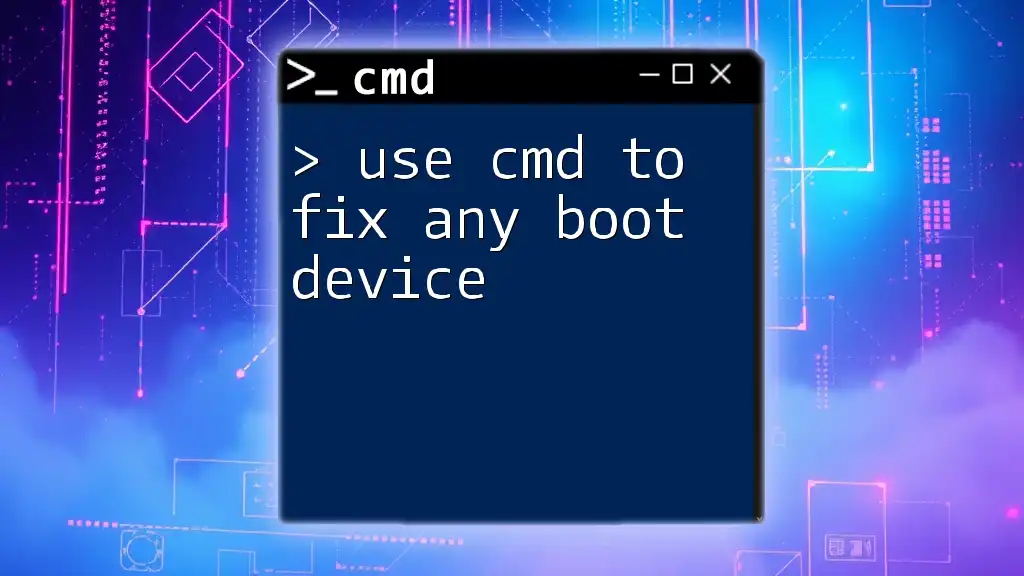
Getting Started with CMD
Accessing Command Prompt
To use Command Prompt (CMD) for troubleshooting boot loops, you first need to access it. Here are two effective methods:
-
Using Windows Installation Media: Insert your Windows installation USB or DVD, boot from it, and select Repair your computer. Navigate to Troubleshoot > Advanced options > Command Prompt.
-
Accessing Advanced Startup Options: If you can't access the OS, repeatedly press F8 or hold the Shift key while choosing Restart to enter the Advanced Startup menu. From there, select Troubleshoot > Advanced options > Command Prompt.
In either method, you will enter the CMD interface, ready to execute commands.
Navigating the CMD Environment
Before diving into repairs, you need to know some basic CMD commands:
- `dir`: This command lists the contents of the current directory, helping you see what files or folders are present.
- `cd`: This changes your current directory. For example, if you need to navigate to the System32 folder, you would use:
cd C:\Windows\System32
Understanding these basic navigation commands is essential as you manipulate files and execute commands.
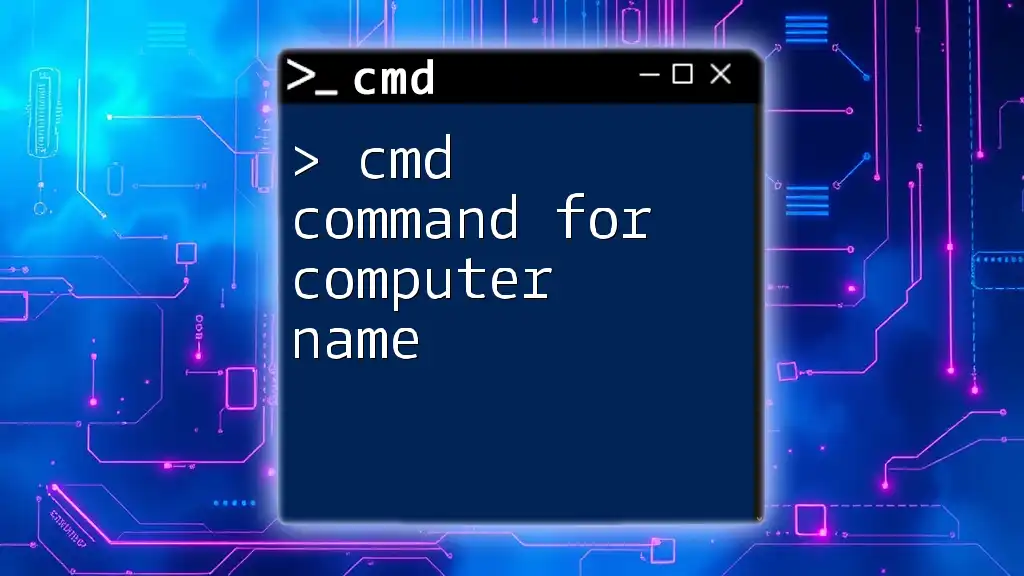
Diagnosing the Boot Loop
Using CMD to Analyze System Files
One of the first steps in diagnosing boot loops is checking your system files for integrity. You can use the System File Checker (SFC) command:
sfc /scannow
When executed, this command scans for corrupted files and attempts to replace them with a cached version in the Windows directory. It’s important to monitor the results, as this can identify major issues affecting your boot process.
Examining Boot Configuration
Understanding the Boot Configuration Data (BCD) is also crucial in addressing boot loops. You can view BCD settings using:
bcdedit
This command lists all boot options and allows you to identify misconfigurations that might be causing the boot loop.
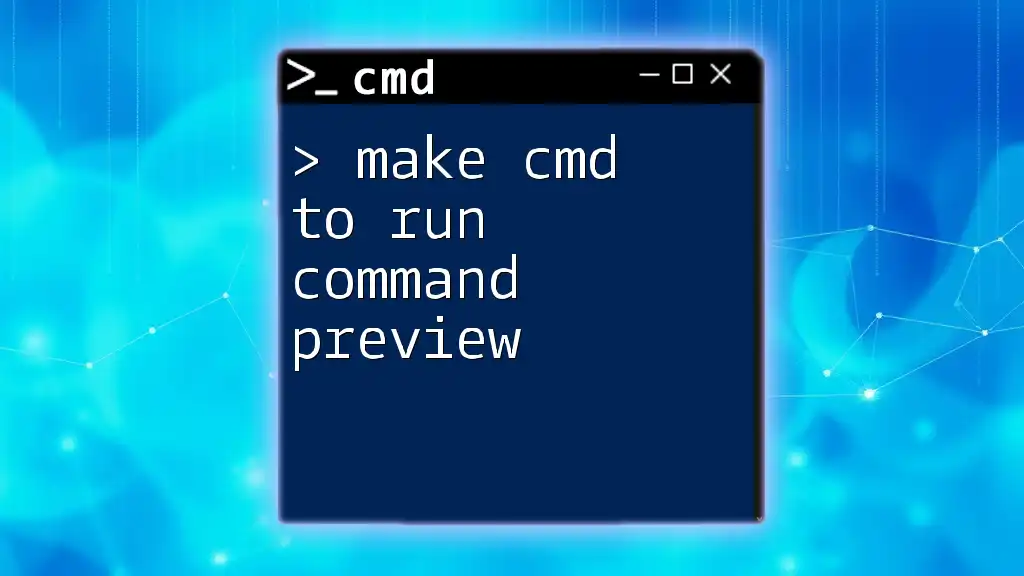
Fixing the Boot Loop
Repairing Corrupted System Files
Upon identifying corrupted files, you can execute the SFC command reliably to repair these issues. Follow these steps to run the command and interpret the results:
- Open CMD as described earlier.
- Enter the command.
- Review the output for any reported issues. If SFC is unable to fix all errors, further action is required.
Using DISM for Corruption Issues
If system files are severely corrupted, the Deployment Image Servicing and Management (DISM) tool can be invaluable. You can execute the following command to repair your Windows image:
DISM /Online /Cleanup-Image /RestoreHealth
- `/Online` tells DISM to target the currently running operating system.
- `/Cleanup-Image` indicates that you're cleaning up issues with the image.
- `/RestoreHealth` instructs DISM to scan for and repair component store corruption.
Understanding these parameters helps ensure you’re accurately deploying the command for maximum effectiveness.
Rebuilding the Boot Configuration Data
If your boot configuration is severely corrupt, rebuilding it can help. Here’s how to do it effectively:
- Start by backing up the current BCD to avoid losing critical data:
bcdedit /export C:\BCD_Backup - Then, delete any malfunctioning configurations and rebuild the BCD:
Each command performs a specialized function:bootrec /fixmbr bootrec /fixboot bootrec /scanos bootrec /rebuildbcd- `/fixmbr`: Repairs the Master Boot Record.
- `/fixboot`: Writes a new boot sector.
- `/scanos`: Scans for installed operating systems.
- `/rebuildbcd`: Rebuilds the Boot Configuration Data.
Following these steps can resolve many boot loop issues tied to BCD corruption.
Additional CMD Commands
Resetting the Windows Registry
The Windows Registry plays a significant role in system configurations. A corrupted registry can lead to boot loops. You can back up your registry using:
reg export HKEY_LOCAL_MACHINE\SYSTEM C:\RegistryBackup.reg
Backing up allows you to restore settings if necessary, providing a crucial safety net.
Using CHKDSK to Repair Disks
Finally, verifying the health of your hard drive is essential. Use the following command to check for errors:
chkdsk C: /f /r
Here’s what the parameters mean:
- `/f`: Fixes any errors found on the disk.
- `/r`: Locates bad sectors and recovers readable information.
Running CHKDSK can uncover and address issues that contribute to boot loops, ensuring the hard drive is functioning optimally.
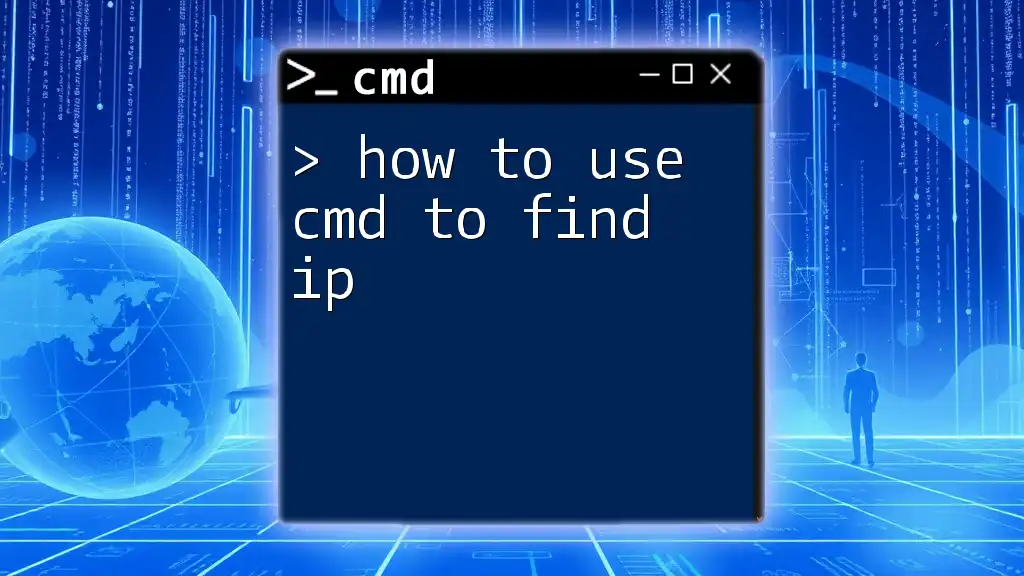
Conclusion
By understanding how to use CMD to fix any boot loop, you empower yourself with valuable troubleshooting tools. From checking system integrity to repairing critical components, mastering these commands can save you time and frustration. Take the next steps to explore CMD further and enhance your system troubleshooting skills. With continuous learning, even complex issues can become manageable, reinforcing your confidence in navigating Windows recovery processes.

